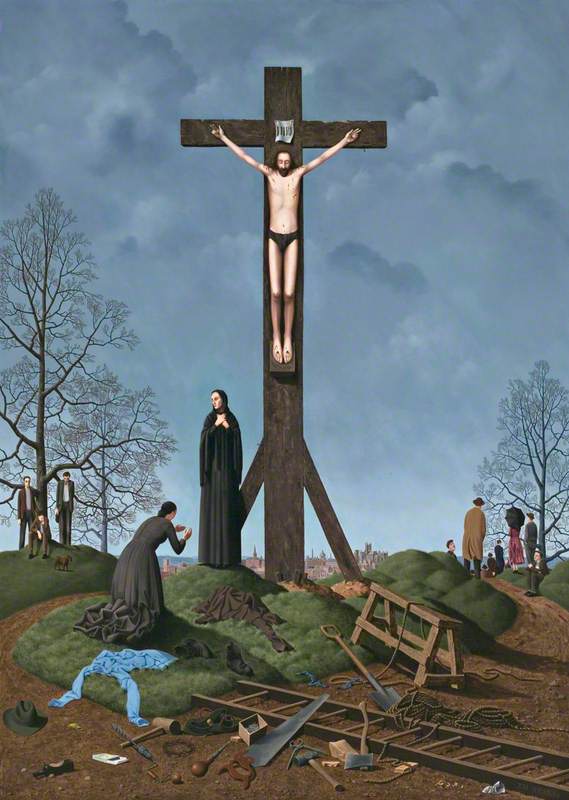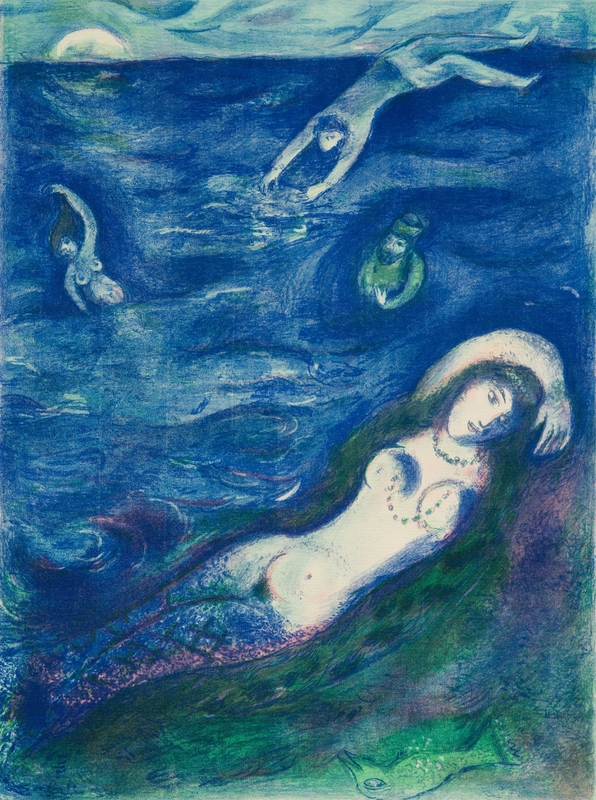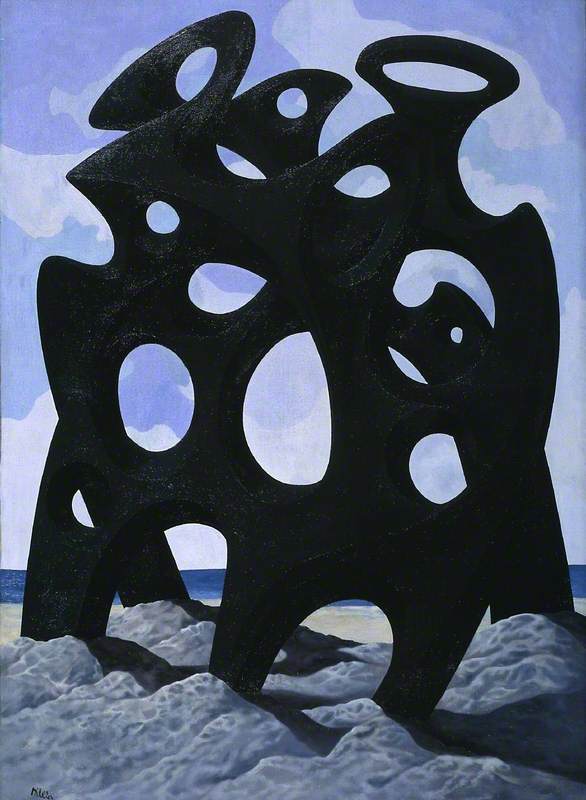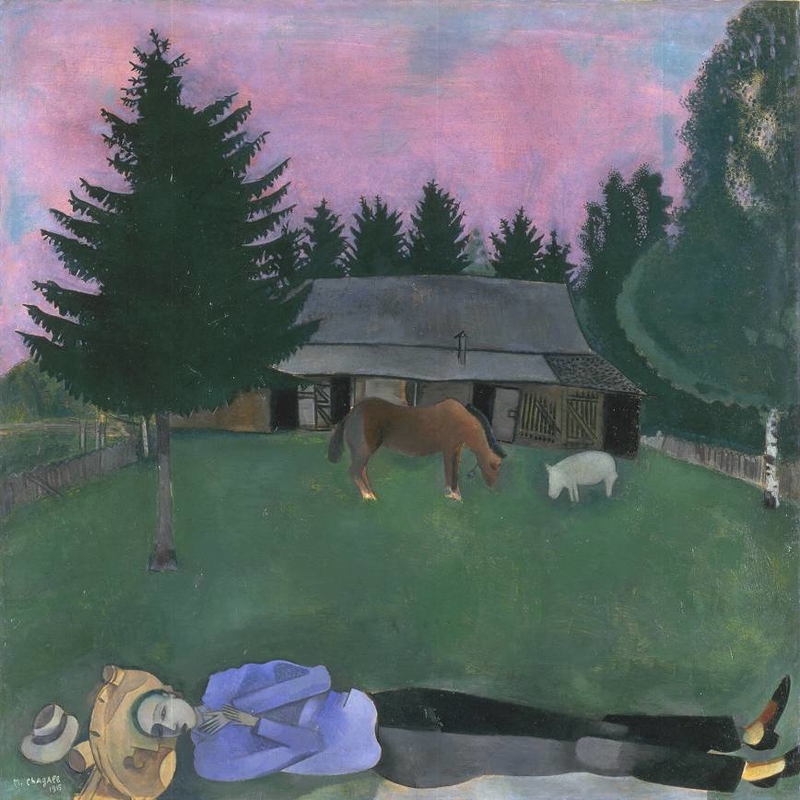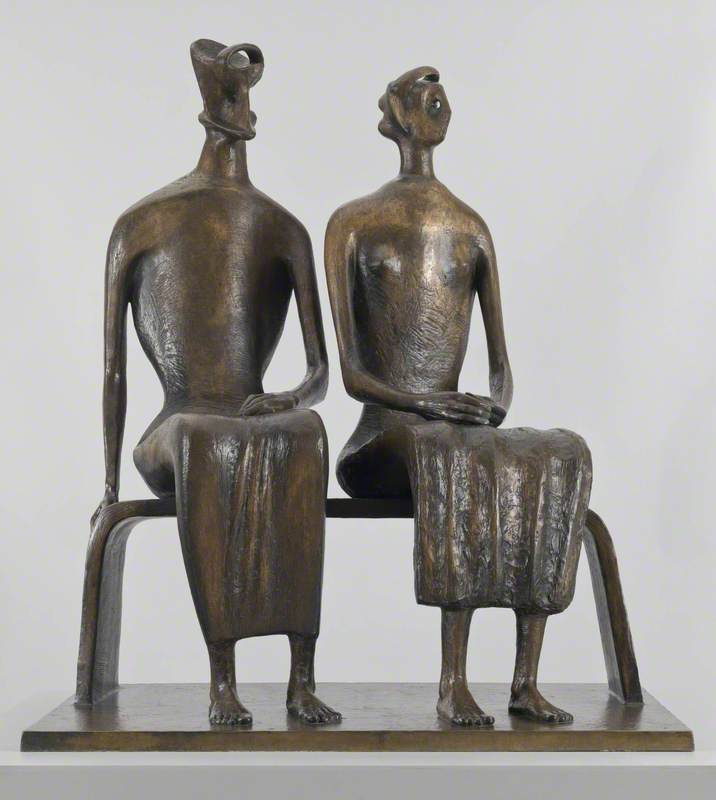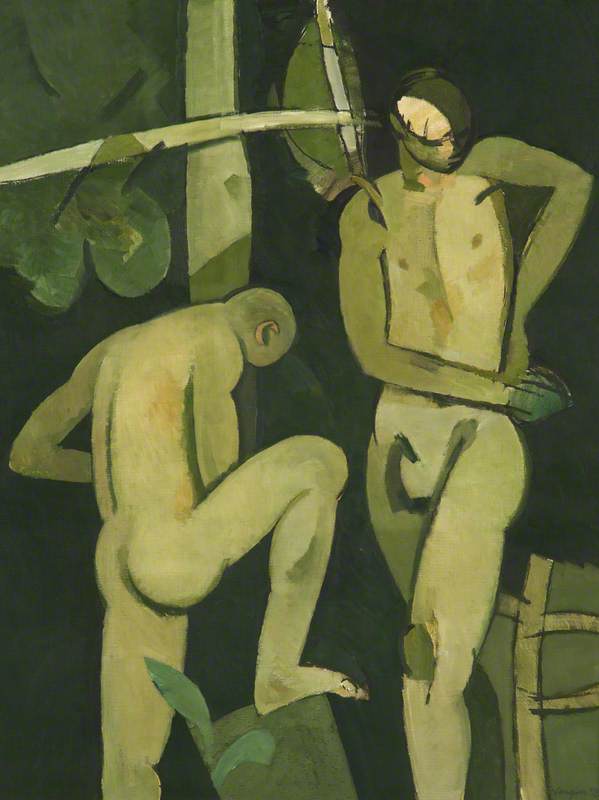Changing Times: A Century of Modern British Art is a FREE exhibition at The Higgins Bedford, running until 16th April 2023. It brings together almost one hundred works from two important collections: Bedford's own Cecil Higgins Art Gallery Collection and the Ingram Collection of Modern British Art.
Changing Times features an array of forward-thinking artists, but many still return to age-old stories for inspiration. This Curation focuses on five artworks from the exhibition that re-interpret Christian, classical and Islamic tales to make them resonate with a modern audience.
-
Crucifixion
The Crucifixion 1954Like the Renaissance masters, Tristram Hillier sets his Crucifixion in the local present day, so viewers can imagine witnessing Christ's suffering first-hand. His dangling jaw reminds us of the painful reality of his death. The carpentry tools, buttresses and paper INRI sign add an unpoetic realism which, to a 20th-century skeptic, may be more compelling than the traditional idealism of Christian art.
The trees, like Christ, look dead but will return to life. Yet the crowd stroll back to their church-filled city, unaware of the Resurrection and its legacy. Litter on the ground tells us this death was mere entertainment to them. We, however, see it as a spectator who stayed behind. Do we join the mourners, or follow the ignorant crowd?
Tristram Paul Hillier (1905–1983)
Oil on canvas
H 147.5 x W 105.5 cm
The Ingram Collection of Modern British and Contemporary Art
-
Crucifixion
'And those who passed by derided him, wagging their heads and saying, "...If you are the Son of God, come down from the cross."'
Matthew 27:39-40
-
Theseus
Theseus c.1950This mural design for the Festival of Britain repurposes the myth of Theseus to reflect the self-identity of 1950s Britain.
Theseus' narrow rectangular shape resembles a classical pediment, whose sculptures often told important stories. The full moon on the left and the half moon on the right establish a passing of time in a dark setting. The left-hand side represents the 'old age'. The Minotaur, an embodiment of savageness, is killed by the central figure Theseus, as shown by the bull skull. The figures on the left are frightened of his light, which represents British exploration and enterprise.
On the right, the 'new age' is illuminated by the light. The figures have just disembarked and are intrigued by the unchartered lands.
John Keith Vaughan (1912–1977)
Oil on board
H 41.9 x W 191 cm
The Ingram Collection of Modern British and Contemporary Art
-
Death of the Suitors
Death of the Suitors 1944During World War 2, Henry Moore turned his hand to drawing due to a shortage of sculptural materials. In 1944 he illustrated a print version of Edward Sackville-West's radio play, The Rescue. It re-tells the ending of Homer's Odyssey, in which Odysseus kills the suitors waiting at his palace to marry his wife Penelope.
The bodies, sprawled in a sea of blood, resemble Moore's sculpture. The range of poses suggests they are in different stages of dying, thereby emphasising the agony. They could even be compared to the Pompeiian plaster casts. But their scattered weapons remind us not to feel pity.
The unwelcome presence of the suitors is a commentary on the Nazis, who were occupying Odysseus' native Greece when the play was written.
Henry Moore (1898–1986)
Pen & ink with chalk & watercolour on paper
H 45.6 x W 30 cm
The Higgins Bedford
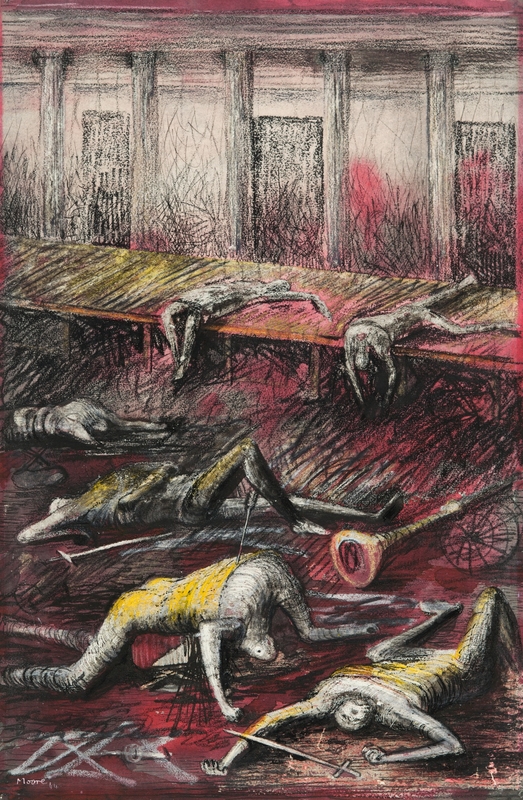 © The Henry Moore Foundation. All Rights Reserved, DACS 2024 / www.henry-moore.org. Image credit: The Higgins Bedford
© The Henry Moore Foundation. All Rights Reserved, DACS 2024 / www.henry-moore.org. Image credit: The Higgins Bedford
-
Death of the Suitors
'Athene! Saviour of cities and men... Do not forsake me now. Let this be my last ordeal; for your sake, let it be the last.'
Odysseus in The Rescue
-
Tales from the Arabian Nights
Tales from the Arabian Nights 1948This Chagall lithograph takes from Julnar the Sea-Born, a story in the Arabian Nights. Julnar is a slave-girl whose beauty infatuates men. She comes from a mermaid family but escaped after falling out with her brother. This plate depicts the moment she beached herself so she could be rescued by a human: 'So I came forth of the Sea and sat down on the edge of an island in the moonshine...'
Chagall does not focus on narrative here; he is more intent on capturing Julnar's beauty. He puts her in the foreground to give her priority. The moonshine in the top left ripples across the water, illuminating her. Unlike the small obscure figures behind her, she is symmetrical and defined, and her body curves echo the movement of the waves.
Marc Chagall (1887–1985)
Lithograph on paper
H 31.7 x W 27.7 cm
The Higgins Bedford
-
Tales from the Arabian Nights
'...the place was illumined by her beauty and her hair hung down to her anklets, in seven tresses, like horse’s tails. She had liquid black eyes, heavy buttocks and slender waist; [the sight of her] healed the sickness of the ailing and quenched the fire of the thirsting...'
Story of Julnar the Sea-Born, from the Arabian Nights
-
The Centauress I
The Centauress I 1912Wyndham Lewis was a famous 20th-century radical who pioneered Vorticism. This short-lived art movement challenged traditional art with its strong geometric angles and abstraction.
In The Centauress I, Lewis turns a traditionally male mythological creature into a female. She seems immobilised by the modern abstract shapes surrounding her. Her startled expression could represent the old order's fear of the future.
Lewis used centauresses in his murals for a London nightclub called The Cave of the Golden Calf. In the Bible the Golden Calf is a false idol — a rejection of God's authority. Although this space only existed between 1912 and 1914, it was greatly enjoyed by Lewis and his radical friends.
Wyndham Lewis (1882–1957)
Pen & ink & wash on paper
H 31.1 x W 37 cm
The Higgins Bedford
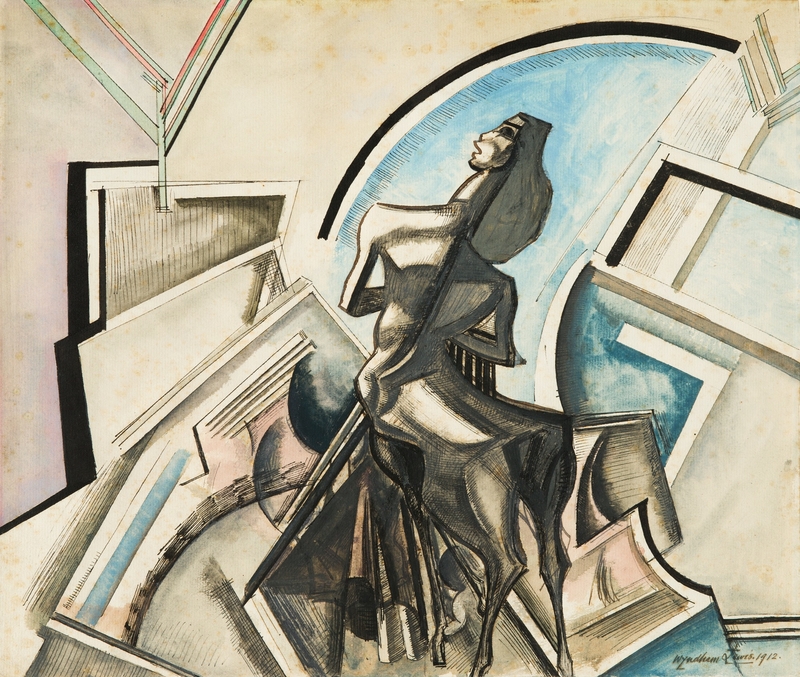 © by kind permission of the Wyndham Lewis Memorial Trust (a registered charity) / Bridgeman Images. Image credit: The Higgins Bedford
© by kind permission of the Wyndham Lewis Memorial Trust (a registered charity) / Bridgeman Images. Image credit: The Higgins Bedford
